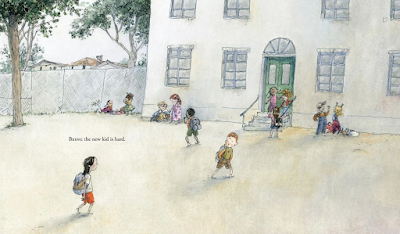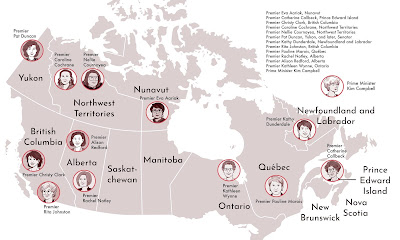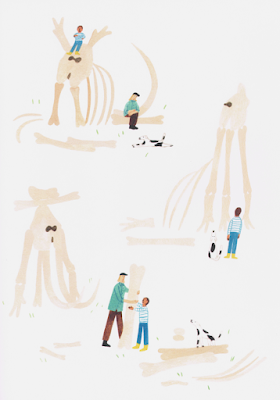Written by Stephen W. Martin
Illustrated by Olivia Aserr
Clarion Books/Houghton Mifflin Harcourt
978-1-328-63184-8
32 pp.
Ages 4-7
July 2021
Most kids would love to know an easy and sure-fire way to make a friend. If only it was as easy as following a set of instructions. Then again, maybe it is.
 |
From How to Make a Friend by Stephen W. Martin, illus. by Olivia Aserr
|
Where to start? How about the library? That's where our earnest young girl finds a book that she's sure "
with the right power tools and a basic understanding of Advanced Robotics" will help her face the challenge of making a friend. She's very meticulous, wearing her lab coat and safety goggles, and even asking her parents before handling plutonium (!). And she knows to make important decisions about the type of friend she wants i.e., what will they be able to do with her, before she gets started. That, and always measuring twice and cutting once, seems like wise advice.
 |
| From How to Make a Friend by Stephen W. Martin, illus. by Olivia Aserr |
Of course, her friend is not exactly as she envisions. The tea parties, hide-and-seek, and water fights don't exactly come off as planned. (How can a friend bigger than a car really hide?) And sometimes a friend doesn't want to play or wants to play with others, and that's OK. What's not OK is when your friend starts doing the wrong stuff and you need to cut them loose (or switch them off).
Don't feel bad. Some friendships just don't work out...
 |
| From How to Make a Friend by Stephen W. Martin, illus. by Olivia Aserr |
But trying to "make" a friend may be just the stepping stone this little girl needs to make a human friend that works out a little better.
Canadian-born Stephen W. Martin, now a resident of California (why, oh why?) may couch his tale of making a friend in the premise of a child building a robotic one, but all his advice, from acceptance of their differences, the possibility of them making other friends, and even abandoning them when the friendship goes awry, is all valuable and highly valid. Friendships are not easy. They are a lot of work and sometimes the work doesn't pay off. But there's always an opportunity to learn what you like or don't like in a friend and How to Make a Friend will give kids a chuckle while teaching them important lessons about friendship.
Olivia Aserr, an LA artist of books and animation, gives How to Make a Friend fabulous digital artwork that is bold in colour and shape and daring in its approach. This little girl is fierce. She doesn't just create a life-size friend; she goes big, really big. Even her lab is sophisticated. And she takes every step as a learning moment about what she wants and doesn't need in a friend. Not only is she intelligent, she's astute, and Olivia Aserr asserts this about the child time after time.
While your children may not have the capabilities of making their own robotic friend at home, Stephen W. Martin guides them through a process that will help them make one smartly but in the old-fashioned way.

































